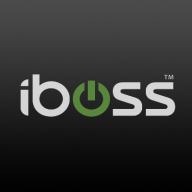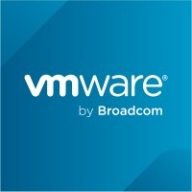


Skyhigh Security and VMware VeloCloud SD-WAN are two leading solutions in the realm of SD-WAN technology. Skyhigh Security often receives more favorable feedback regarding pricing and support, while VMware is noted for its advanced feature set despite higher costs.
Features: Skyhigh Security stands out for its robust security features, user-friendly interface, and reliable connectivity. VMware VeloCloud SD-WAN is known for its extensive network optimization capabilities, seamless application performance, and support for a wide range of devices.
Room for Improvement: Skyhigh Security needs enhanced analytics tools, better integration capabilities, and improved scalability. VMware VeloCloud SD-WAN requires improvements in scaling functionalities, clearer documentation, and more intuitive user interfaces.
Ease of Deployment and Customer Service: Skyhigh Security is praised for straightforward deployment and responsive customer service. VMware VeloCloud SD-WAN has a more complex deployment process and, while its support team is praised, it can have slower response times.
Pricing and ROI: Skyhigh Security is appreciated for competitive pricing and quick ROI. VMware VeloCloud SD-WAN, despite higher initial setup costs, offers good long-term ROI due to advanced features, making its pricing justified for those prioritizing performance and reliability.
| Product | Market Share (%) |
|---|---|
| iboss | 2.1% |
| VMware VeloCloud SD-WAN | 3.1% |
| Skyhigh Security | 1.8% |
| Other | 93.0% |



| Company Size | Count |
|---|---|
| Small Business | 6 |
| Midsize Enterprise | 6 |
| Large Enterprise | 5 |
| Company Size | Count |
|---|---|
| Small Business | 29 |
| Midsize Enterprise | 4 |
| Large Enterprise | 37 |
| Company Size | Count |
|---|---|
| Small Business | 23 |
| Midsize Enterprise | 14 |
| Large Enterprise | 20 |
Iboss offers a comprehensive cloud-based security platform valued for its scalability and autonomous features, ensuring robust security with easy deployment and management capabilities.
Renowned for its robust security architecture, Iboss integrates seamlessly within diverse networks, delivering efficient granular filtering and advanced content categorization. Its single pane of glass console provides ease of management, allowing rapid scalability suitable for rapidly deploying environments. Operates in BYOD setups due to inline filtering without device installation. Integration with cloud-based applications enhances user control, and features like SASE, SSL inspection, and ChatGPT risk protection stand as highlights. Despite its strengths, users have pointed out areas for enhancement like direct navigation in reports, SSL decryption, and better cloud integration while having room to improve data loss prevention.
What are the most important features of Iboss?The usage of Iboss spans educational institutions, specifically K-12, to enforce internet policies, protect data, and support remote work environments. It provides web filtering and security frameworks to ensure safe browsing. Its platform-as-a-service model offers flexibility for both cloud-based and on-premises requirements, integrating seamlessly to deliver enhanced security features suitable for various deployment needs including zero trust, CASB, and network security for work-from-home setups.
Skyhigh Security protects organizations with cloud-based Zero Trust security solutions that are both data-aware and simple to use. Skyhigh’s Security Service Edge portfolio goes beyond data access and focuses on data use, allowing organizations to collaborate from any device and from anywhere without sacrificing security, while providing the visibility and control required to monitor and mitigate security risks.
The Skyhigh Security Service Edge portfolio includes Skyhigh Secure Web Gateway, Skyhigh Cloud Access Security Broker, Skyhigh Private Access, and Skyhigh Cloud Native Application Protection Platform. All solutions form a fully converged, consolidated platform, and are managed from the same single console.
Skyhigh Security Benefits
Skyhigh Security Features
VMware Software-Defined Wide Area Network (SD-WAN) is a secure access service edge (SASE) platform that combines many types of software-based network technologies in an attempt to enable users to virtualize their wide area networks and reduce their reliance on hardware. In essence, this solution makes it possible for users to reliably access their applications from anywhere in the world by leveraging cloud technologies. Users can simply, efficiently, and completely control their network devices and traffic. It ensures that organizations are always able to use the best possible connection to their data centers. VMware SD-WAN steers traffic so that it is always using the most reliable connections and at the same time takes steps to remediate any problems that it detects in other network links. This guarantees that organizations can access high-priority applications at all times.
VMware SD-WAN Benefits
Some of the ways that organizations can benefit by deploying VMware SD-WAN include:
VMware SD-WAN Features
Reviews from Real Users
VMware SD-WAN is a solution that stands out when compared to many of its competitors. Two major advantages it offers are its ability to automate the process of creating and maintaining a virtual local area network and its intuitive user dashboard.
Sami I., principal cloud architect at Loihe, writes, “One of the solution's most valuable features is the VMware core automation stack at an SDDC. It includes NSX, the VMware virtualization layer for the networks (the LAN virtualization), which works extremely well with the VMware SD-WAN solution and is the primary advantage over all the others. None of the other vendors could integrate with the virtual LAN, making it quite complicated and virtualized to be fully automated.”
Chih S., senior technical consultant at a tech services company, says, “The product has a very good user dashboard that is simple to navigate.”
We monitor all Secure Access Service Edge (SASE) reviews to prevent fraudulent reviews and keep review quality high. We do not post reviews by company employees or direct competitors. We validate each review for authenticity via cross-reference with LinkedIn, and personal follow-up with the reviewer when necessary.